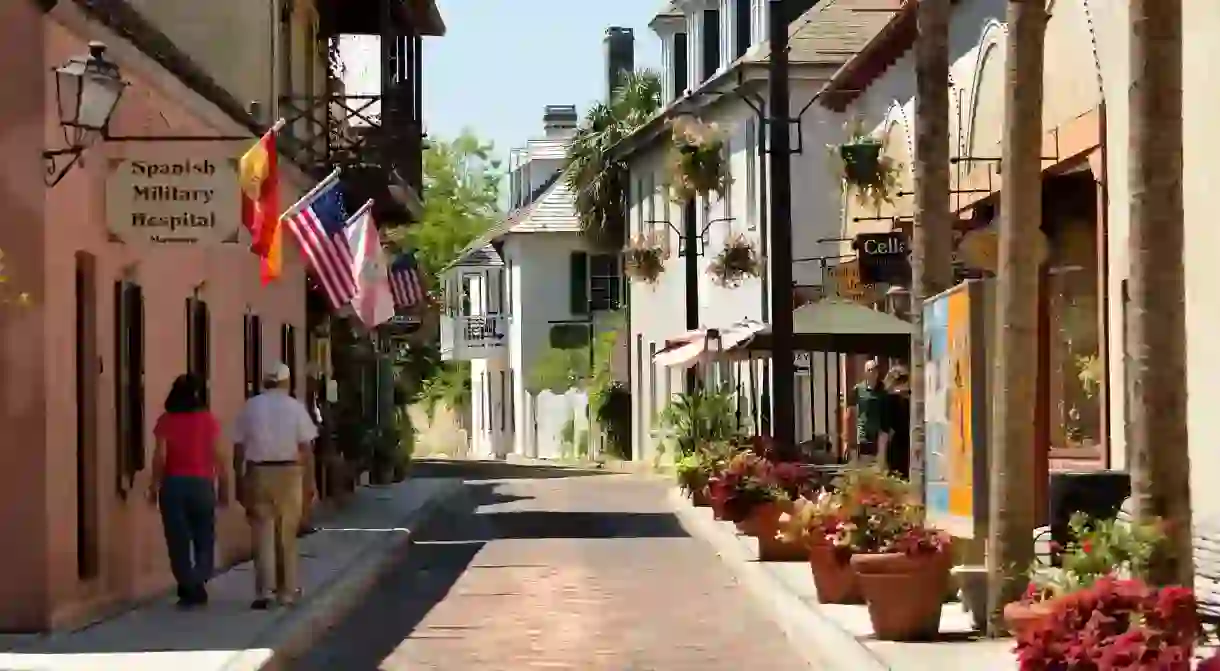Historic Places to Visit in Florida

The Sunshine State may be a popular tourist destination for its idyllic beaches and year-round pleasant weather, but the tropical landscape is home to a plethora of historic sites to mark on your itinerary. Here’s a guide to our favorites.
Did you know – Culture Trip now does bookable, small-group trips? Pick from authentic, immersive Epic Trips, compact and action-packed Mini Trips and sparkling, expansive Sailing Trips.
Key West Lighthouse
Guiding ships through the treacherous waters of the Caribbean, the historic lighthouse on the port of Key West operated from 1847 until 1979. The lighthouse is open daily from 9:30 a.m. to 4:30 p.m. Admission is $10 for adults, $9 for seniors, $5 for children and students, children under 6 are free.

The Kampong
An 80-year-old baobab tree from Tanzania and an array of exotic fragrant flowering plants make up the tropical oasis at The Kampong. The historic garden and estate once belonged to Dr. David Fairchild, a famous botanist who traveled through Asia and other tropical regions collecting plants he later brought to the U.S. The Kampong offers self-guided tours through the site and historic main house on Wednesdays and Thursdays.

The Barnacle Historic State Park
Five acres of historic land sits along the scenic Biscayne Bay in the Coconut Grove neighborhood of Miami. Built in 1891, The Barnacle is the oldest house in Miami-Dade County, dating back to the sailboat era when all travel to Miami was done by sea. Visitors can see replicas of sailboats that belonged to former estate owner, Ralph Middleton Munroe, as well as enjoy a picnic on the lawns under the Banyan trees with the placid breeze from the sea.

Bill Baggs Cape Florida State Park
Perched at the edge of Key Biscayne, visitors can take a tour of the Cape Florida Lighthouse in Bill Baggs Cape Florida State Park. The lighthouse was constructed in 1825, and is also nestled on a popular beach offering activities such as kayaking and shoreline fishing.

Bonnet House Museum & Gardens
The site on which the Bonnet House in Fort Lauderdale is nestled was home to the Tequesta people dating back all the way to 2,000 B.C. The Bonnet House began construction in 1920, and was home to several owners until it was listed on the National Register of Historic Places in 1984.
Lightner Museum
Set in the country’s oldest town of St. Augustine, the Lightner Museum is an architectural marvel from 1888. The structure served as the Alcazar Hotel run by Florida’s pioneer, Henry Flagler, and was famous for housing the world’s largest indoor swimming pool at the time. Today it is home to a fine and decorative 19th-century art collection.

Castillo de San Marcos National Monument
The Castillo de San Marcos in St. Augustine dates back to 1672, making it the oldest masonry fort in the United States. During different times since then it was controlled by Spain, Great Britain, and now the U.S. It was also used as a prison for Native American tribes during the Second Seminole War.

Fort Matanzas National Monument
Another national monument in St. Augustine is the Fort Matanzas. During the colonial wars, the fort guarded the city’s southern river approach, but its area spans about 100 acres consisting of marshes and barrier islands that are home to a diverse collection of plants and animals.
Fernandina Beach on Amelia Island
Amelia Island’s Historic District is home to over 400 historic buildings including churches, homes and commercial buildings on the National Register of Historic Places. Clad in Victorian-era architecture, the waterfront district echoes a charming small town feel where horse-drawn carriages still trot through the lanes and antique shops and galleries sell long-forgotten trinkets. A few establishments to put on the itinerary include The Palace Saloon (Florida’s oldest drinking establishment), the old post office and the Amelia Island Lighthouse dating back to 1838.
Kingsley Plantation
The Kingsley Plantation, previously known as Fort George Island in Jacksonville, was owned by planter Zephaniah Kinglsey, whose family lived here from 1814–1837. The plantation produced Sea Island cotton, sugar cane and corn, and had 60 slaves working on the property. Visitors may explore the property’s plantation house, garden, slave quarters, barn, and a bookstore in a 1920s building adjacent to the plantation buildings. Audio tours are also available every day until 3:30 p.m.













